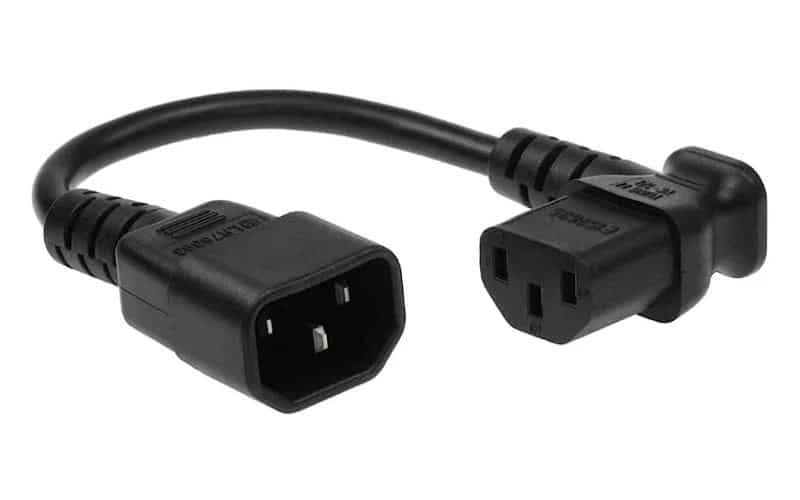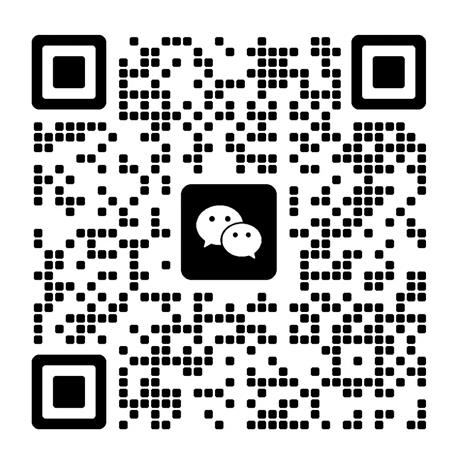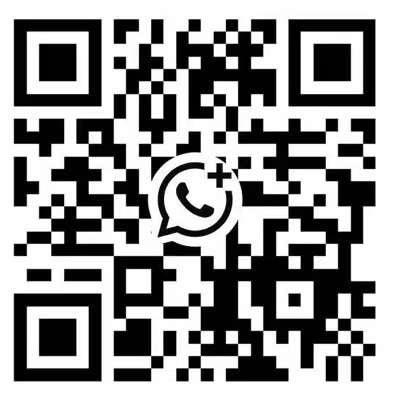
Introduction to the IEC 60320 Standard
The International Electrotechnical Commission (IEC) is a global organization responsible for developing and publishing international standards related to electrical, electronic, and similar technologies. Among these standards is the IEC 60320, which primarily focuses on appliance couplers used to connect electrical devices with a power supply.
These couplers are widely used across various industries, such as consumer electronics, medical equipment, data centers, industrial facilities and other applications that require detachable power cables. The IEC 60320 standard outlines specifications for these components’ design, performance and safety ensuring compatibility and reliability among different connectors across the globe.
By adhering to this standardized regulation, manufacturers can promote uniformity in their products while reducing potential risks associated with incorrect usage. Furthermore, users of IEC-compliant devices can confidently rely on their quality performance while also benefiting from improved ease-of-use and interconnectivity between various devices.
Components of the IEC 60320 Standard
The IEC 60320 standard comprises several key components that work together to ensure the safe and effective use of electrical appliances. In this section, we will delve into these components to better understand their significance within the standard.
Appliance Couplers: The backbone of the IEC 60320 standard is its system of appliance couplers. These couplers are essentially a set of standardized connectors designed for various applications in which an electrical device must be connected to a power source. They come in multiple types, each identified by a letter followed by a number (e.g., C1, C13), and they are categorized based on their specific uses and corresponding ratings for voltage and current.
Interchangeable Plugs: Another integral component of the standard is interchangeable plugs, which allow users to easily adapt appliances for use with different types of power outlets around the world. These include plug classes such as “A,” “B,” and “C,” each associated with specific geographic regions or electrical systems.
Polarity: The IEC 60320 maintains polarity within its connections to ensure safety and proper functioning of connected devices. Polarity refers to the consistent orientation of conductors throughout a circuit—namely, keeping live (“hot”) wires separate from neutral ones. Ensuring correct polarity helps reduce potential hazards like electric shock or damage to devices caused by improper wiring connections.
Grounding: One essential safety feature incorporated into the design of many IEC 60320 connectors is grounding (also known as “earthing”), which provides an intentional pathway for electric current to flow back toward its source should a fault condition arise. Grounding can help protect people from potential electric shocks due to malfunctioning equipment or wiring faults, while also offering some level of protection for electronic devices from damaging surges.
Keyed Connections: To facilitate proper coupling between corresponding connectors and prevent accidental mismatings, the IEC 60320 standard utilizes keyed connections. This means that connectors are designed in such a way that they can only be inserted in the correct orientation, ensuring proper connectivity and minimizing possible safety hazards.
By understanding the various components of IEC 60320, it becomes clear how this globally recognized standard works holistically to provide safe and reliable electrical connections for appliances worldwide. The intricacies of these components – appliance couplers, interchangeable plugs, polarity, grounding, and keyed connections – are all essential aspects of achieving this goal.
Common Coupler Types and Their Applications
The IEC 60320 standard specifies a variety of coupler types, each designed for specific applications and power requirements. These couplers consist of two parts: the appliance inlet (which is typically mounted on the device) and the connector (which connects to the power supply cable). Some of the most common coupler types used in various industries are:
- C1/C2: These ultra-small couplers are often utilized for low-power devices such as shavers, nightlights, and small appliances. The C1 is the appliance inlet, while the C2 is the connector.
- C5/C6: Also known as “Mickey Mouse” or “Cloverleaf” connectors due to their distinctive shape, these couplers are widely used on laptop power supplies, projectors, and other compact electronic devices. The appliance inlet is denoted by C6, while C5 represents the connector.
- C7/C8: Often referred to as “figure-eight” or “unearthed 8,” this coupler type is commonly used for low-power electronics like portable radios, laptops without grounded plugs, and small household appliances. The C7 component acts as an appliance intake while its counterpart C8 functions as a connector.
- C13/C14: These general-purpose connectors are employed extensively in personal computers (PCs), computer monitors, IT equipment such as servers and switches, audio amplifiers, printers and more. With the designation of C13 for an appliance inlet position and a matching role for C14 in signaling connectors.
- C15/C16: Identified by their notched structure which contributes compatibility with their associated higher temperature ratings (up to 120°C). They often find applications in high-performance electric kettles or industrial machines that might experience elevated working temperatures beyond typical ranges. Snugly fitting into place with both parts (inlet C15 and connector C16).
- C19/C20: Designed for heavy-duty applications like servers, power distribution units (PDUs), and other high-power equipment that require high current capacities. These couplers accommodate a combination of appliance inlets (C19) and matching connectors (C20) to maintain the flow of electric currents.
Understanding these common coupler types and their intended applications is vital for ensuring proper power supply connections, electrical safety, and compatibility between devices. It’s essential to choose the correct configuration based on your specific needs to optimize performance and prevent possible hazards associated with incorrect or mismatched connections.
Voltage and Current Ratings for Different Couplers
When selecting an IEC 60320 coupler for your device, it is crucial to consider the voltage and current ratings. These values are important in determining the overall performance, efficiency, and safety of the connector or coupler. Each type of IEC 60320 coupler has specific voltage and current ratings, which are defined by two factors: the equipment’s intended use (appliance type) and operating conditions (ratings).
IEC connectors come with various standard international voltage ratings such as 120VAC for North American systems or 230VAC for European ones. Each region could require different voltage standards based on their local power distribution system. It’s essential to verify compatibility in terms of regional standards when buying or using specific connectors.
The current rating refers to the maximum electrical current a connector or coupler can safely carry without compromising its performance or posing any risks to users. These ratings range from 10A up to 16A. The selection of a suitable current rating also depends on factors such as ambient temperature, application type (heavy-duty or typical), insulation class, and other specifications.
Here are some common IEC 60320 couplers with their respective voltage and current ratings:
- C1/C2: Rated at 2.5A/250V AC
- C5/C6: Rated at 2.5A/250V AC
- C7/C8: Rated at 10A/125V AC
- C13/C14: Rated at 15A/250V AC
- C15/C16: Rated at 120°C during high temperature operation; rated at regular operating temperatures up to 10A/250V AC
- C19/C20: Rated at either North American standard of up to 20A/240V AC or International Energy Efficiency Standard (IEC) up to BSI-British Standard 16A/250V AC
Understanding the voltage and current ratings of IEC 60320 couplers is essential for selecting the right connector or coupler, ensuring optimal performance, and adhering to regional regulations. It’s important to choose a coupler that appropriately matches your device’s requirements without posing any risk to user safety or equipment longevity. Keep in mind that misusing connectors or choosing unsuitable ratings can lead to electrical problems, appliance malfunctions, or even dangerous scenarios like overheating and fire hazards.
Regional Variations in IEC 60320 Standards
The IEC 60320 standard is an international framework that specifies requirements for power connectors, but regional differences can lead to variations in the standard across different countries. These variations arise due to factors such as local electrical systems, wiring codes, and regulatory bodies overseeing compliance. In order to maintain global compatibility and compliance, manufacturers and consumers must understand these regional nuances to select and use the appropriate connectors.
One significant variation among regions is the specific plug type used for power connections. The IEC 60320 standard has numerous connector types defined (e.g., C1 through C24), each with its unique combination of voltage, current ratings, number of pins, pin dimensions, and pin arrangements. Different countries adopt different subsets of these connector types based on their electrical infrastructure.
For example, in North America, the most common connector is the C13/C14 coupler for data centers or office equipment requiring up to 10A of current at 250V maximum. In contrast, European countries might typically employ the CEE7/7 plug (a non-IEC connector) or a Schuko plug in conjunction with a C19/C20 coupler for higher current ratings within similar voltage limits.
Regulatory or safety standards also influence regional variations in IEC 60320 compliant devices. While most countries adhere to international safety specifications such as those from Underwriters Laboratories (UL) or Conformité Européene (CE), local authorities may have additional requirements that further influence design decisions for product manufacturers. Examples range from country-specific safety marks like Gost-R (Russia) or PSE Diamond Mark (Japan) to certification requirements posed by governments or independent organizations overseeing local market approvals.
To ensure conformity with applicable standards and regulations at your location or target market areas, it is essential to do thorough research on local regulations and customs prior to selecting products based on IEC 60320 requirements. Consulting with manufacturer representatives, industry experts, or compliance consultants might provide valuable insights into region-specific variations and enable informed decision-making as you navigate the unique challenges associated with international compliance.
Safety Features of IEC 60320 Compliant Devices
IEC 60320 compliant devices are specifically designed to ensure user safety, minimize the risk of electrical hazards, and maintain reliable power connections. These safety features are established through various regulations and certifications present in the IEC 60320 standard.
Firstly, IEC 60320 connectors and couplers are designed with a polarized structure – this means that they can only be inserted in one orientation, ensuring proper grounding and connection. This polarization helps prevent electrical shock or damage to devices by ensuring correct wiring is maintained during installation.
Moreover, different coupler types possess varying degrees of protection depending on their application. For example, connectors with higher ingress protection (IP) ratings are more resistant to dust and moisture ingress. This ensures the safe use of these connectors in environments where such external factors may pose a threat to electrical integrity.
Additionally, temperature ratings specify the maximum allowable operating temperature for each connector type. These ratings help prevent overheating and associated fire risks by specifying constraints based on environmental conditions.
The materials used in constructing IEC 60320 compliant devices also contribute significantly to their safety features. High-quality plastics with flame retardant properties inflate self-extinguishing functionalities to withstand high temperatures without compromising functionality or posing additional risks.
Furthermore, tamper-resistant designs integrated into compliant connectors minimise accidental contact with live components while coupling or uncoupling devices. These designs provide a physical barrier between users and energised parts, contributing towards overall user safety.
Lastly, compliance with certification marks such as UL (Underwriters Laboratories), CSA (Canadian Standards Association), or CE (Conformité Européenne) further guarantees that these devices have undergone rigorous testing procedures for reliable performance under specific standards and requirements. Products bearing these marks indicate adherence to essential safety requirements outlined in the standard.
The Importance of Certification Marks on IEC 60320 Products
Certification marks play a crucial role in verifying the safety, performance, and regulatory compliance of IEC 60320 products. These marks indicate that the connectors, couplers, and related components meet or exceed the standards established by the International Electrotechnical Commission (IEC) or other relevant authorities. Moreover, certification marks offer reassurance to users that they can trust in the quality and reliability of these devices.
A recognized certification mark is a sign of rigorous testing and evaluation carried out by independent third-party organizations. These organizations evaluate product safety under normal operating conditions and ensure their adherence to IEC 60320 standard requirements. Some well-known certifying bodies include Underwriters Laboratories (UL), European Conformity (CE), Canadian Standards Association (CSA), and TÜV Rheinland.
By purchasing certified IEC 60320 compliant products, customers enjoy benefits such as improved reliability, reduced risk of electrical accidents, and enhanced product life due to higher-quality materials and manufacturing standards. Additionally, many industries require compliance with the IEC 60320 standard to effectively manage risks or for equipment interoperability purposes.
Submission to certification bodies not only helps manufacturers demonstrate their commitment to safety but also adds value to their brand reputation in international markets. Moreover, certified products often result in more accessible export opportunities due to simplified regulatory processes across different regions.
Guidelines for Proper Use of IEC 60320 Compliant Devices
Using IEC 60320 compliant connectors and couplers per the standard guidelines helps ensure optimum performance, safety, and device longevity. To achieve these benefits, follow these critical practices while dealing with IEC 60320 components:
- Verify compatibility: Confirm that both ends of the connector assembly are compatible in terms of voltage and current ratings, as well as noting the specific device application.
- Check regional variations: As electrical systems differ across various regions and countries, make sure to adhere to local regulations when using IEC 60320 connectors or appliances.
- Inspect periodically: Conduct regular visual inspections of connectors, cables, and electrical devices for damage or wear, such as frayed cords, cracked casings, or bent pins. If any issues arise, seek immediate repair or replacement by qualified professionals.
- Avoid overload: Be conscious of the power capacity of your electrical systems when using multiple connections or high-powered devices to protect against overloading circuits.
- Maintain a proper environment: For optimal performance and safety, keep plugs and connectors clean by wiping them with soft cloths periodically; store in cool, dry areas free from excessive heat sources or moisture that can lead to deterioration or malfunction.
- Ensure secure connections: Avoid connecting loose-fitting plugs into outlets to prevent overheating and fire hazards; ensure firmly seated couplers between appliances and their respective power cords for optimum stability.
- Follow manufacturer’s usage instructions: Adhere strictly to manufacturers’ recommendations regarding installation procedures, operating conditions, and maintenance schedules when working with IEC 60320 products.
By adhering to these guidelines during the use of IEC 60320 compliant devices, you not only guarantee improved safety but also extend their lifespan while maintaining efficient power delivery throughout your establishment. Don’t hesitate to seek professional assistance if you encounter problems or uncertainties in correctly implementing these guidelines.
How to Choose the Right Connector or Coupler for Your Application
Selecting the appropriate IEC 60320 connector or coupler is crucial for ensuring safe, efficient, and reliable performance in your intended application. Factors such as voltage and current ratings, specific use case requirements, regional variations, and safety certifications should all be taken into account when choosing a suitable connector or coupler. Here are some key considerations to help guide your decision-making process:
- Evaluate the Voltage and Current Requirements: Start by determining the necessary voltage and current rating of the device you intend to connect. Match these ratings with compatible connectors or couplers that can handle these specifications without exceeding their limits.
- Consider the Use Case: Identify the specific function of your desired connector or coupler – will it be used for power transmission between devices or simply for data transfer? Some applications may require specialized connectors designed to withstand harsh environmental conditions such as extreme temperatures or moisture levels.
- Identify Regional Standards: Be aware of any regional variations in IEC 60320 standards, as they may impact compatibility between connectors and devices across different regions. Ensure that your chosen product complies with local regulations governing electrical safety and performance.
- Verify Safety Features: Opt for IEC 60320 compliant devices that incorporate essential safety features like over-temperature protection, overload protection circuits, flame retardant materials, and proper grounding mechanisms.
- Check Certification Marks: Look for products that carry recognized certification marks like UL (Underwriters Laboratories), CE (European Conformity), TUV (Technischer Überwachungsverein), and other similar endorsements on their products to guarantee that they meet relevant quality standards.
- Account for Flexibility and Size Constraints: Consider factors such as cable length, shape, size of connectors/couplers as well as installation constraints when selecting an appropriate product.
- Consult Experts or Manufacturers: When in doubt, consult with an expert or the manufacturer to get a better understanding of which connector or coupler best meets your specific needs.
By carefully considering these factors and performing the necessary research, you can confidently choose the right IEC 60320 connector or coupler for your application. Doing so will not only ensure optimal safety and performance but also help protect your investment in equipment and improve overall user satisfaction.
In conclusion
In conclusion, navigating the intricacies of IEC 60320 standard and related regulations for IEC connectors is crucial for ensuring safe, efficient, and compliant power connections in today’s technology-driven world. Equip yourself with the knowledge and understanding of this essential standard to make informed decisions and optimize your applications. Harness the power of compliance by staying updated with ever-evolving guidelines and exceed expectations with unparalleled safety and functionality. Embrace the authority of IEC 60320 to achieve ultimate success in your electrical ventures.
Author
 Hello, my name is Eva Xia, and I am currently the Marketing Manager at Yueqing Weup Technology Co., Ltd, located in Wenzhou, Zhejiang, China. With over a decade of experience in the accounting field, I have developed extensive knowledge and skills that enable me to excel in my role. Additionally, I have spent two years working as an English teacher, which enhanced my communication abilities and instilled discipline within me.
Hello, my name is Eva Xia, and I am currently the Marketing Manager at Yueqing Weup Technology Co., Ltd, located in Wenzhou, Zhejiang, China. With over a decade of experience in the accounting field, I have developed extensive knowledge and skills that enable me to excel in my role. Additionally, I have spent two years working as an English teacher, which enhanced my communication abilities and instilled discipline within me.
Having gained more than three years of valuable experience in overseas sales, I have had the opportunity to expand my horizons and develop a deeper understanding of the commercial landscape. This exposure has nurtured my business understanding and allowed me to navigate diverse markets confidently.
However, despite my accomplishments thus far, I remain dedicated to continuous growth and learning. My current area of focus revolves around electronic switches. It is a fascinating and dynamic field that constantly evolves with technological advancements. By delving deeper into this realm, I aim to enhance my professional knowledge and stay ahead of industry trends.
In summary, as a Marketing Manager at Yueqing Weup Technology Co., Ltd., I bring forth a wealth of experience in accounting coupled with the valuable skills honed during my time as an English teacher. Furthermore, my extensive overseas sales expertise has sharpened my business acumen. With a relentless thirst for knowledge and a specific interest in electronic switches, I strive to enhance my professional capabilities further while contributing positively to our organization’s success.
Get in Touch for More Insights!
If you’ve found the information helpful and want to learn more, I encourage you to reach out. Whether your questions concern our latest industry trends, electronic switches, or other market insights, I’m here to help!
Don’t hesitate to drop me an email at the below table.
I am looking forward to hearing from you soon!
Eva Xia,
Marketing Manager at Yueqing Weup Technology Co., Ltd


